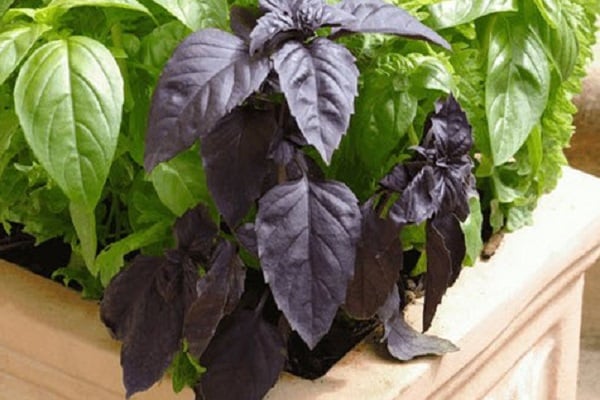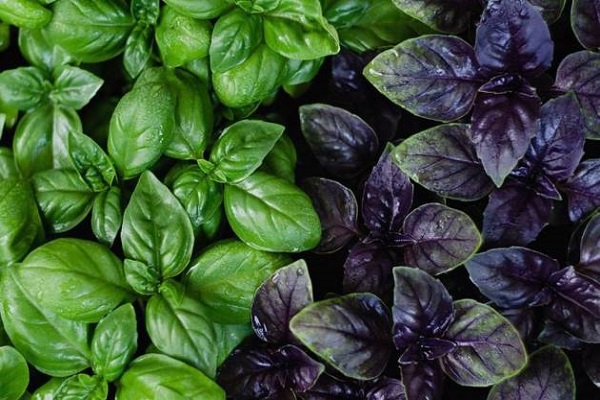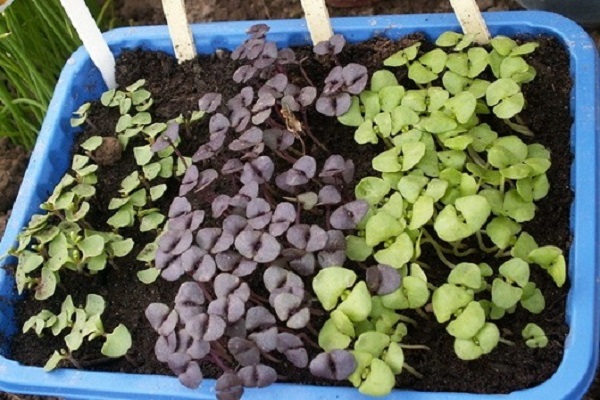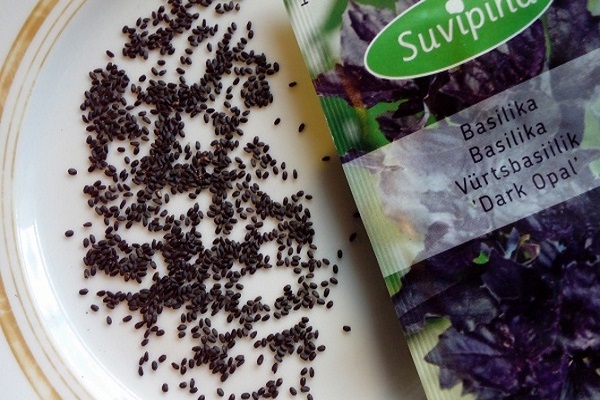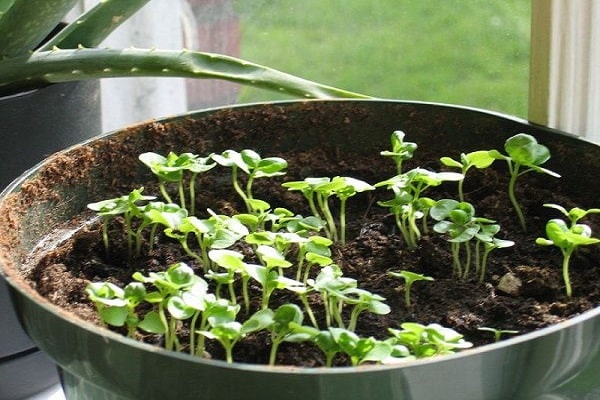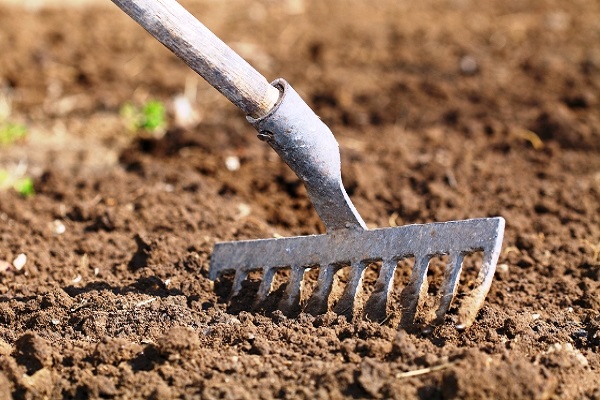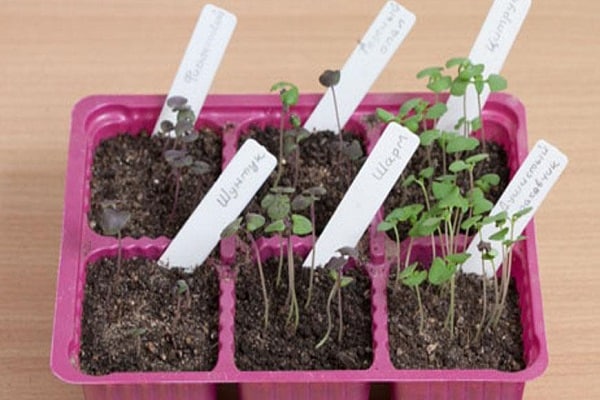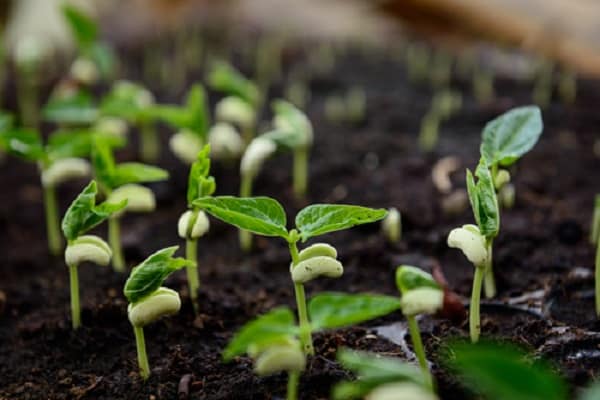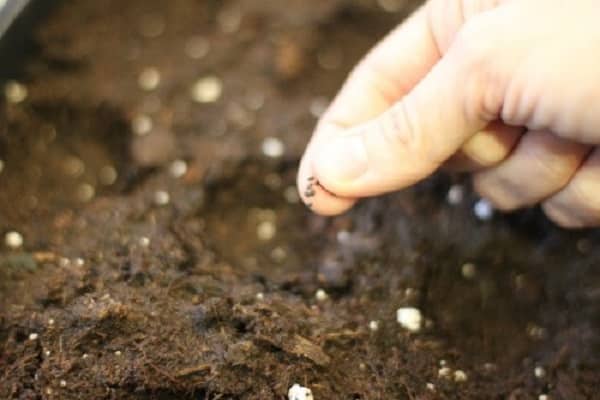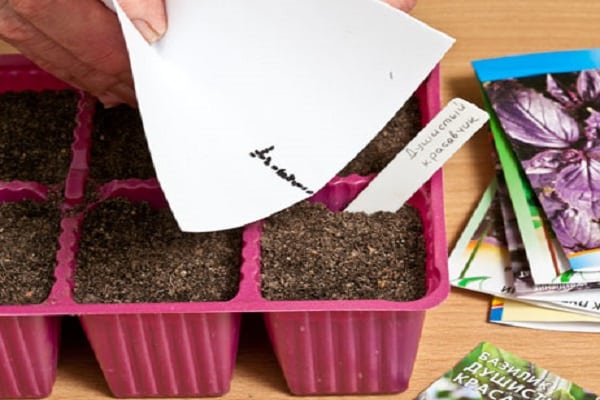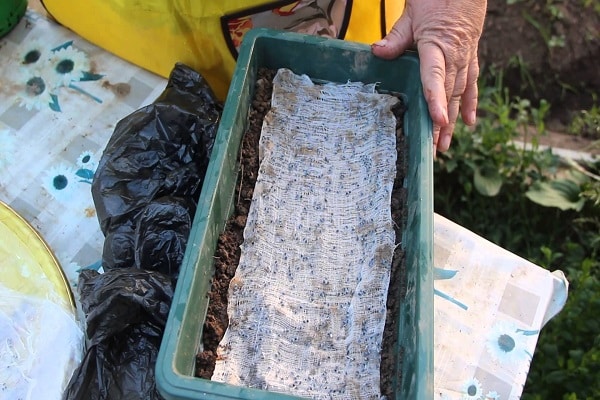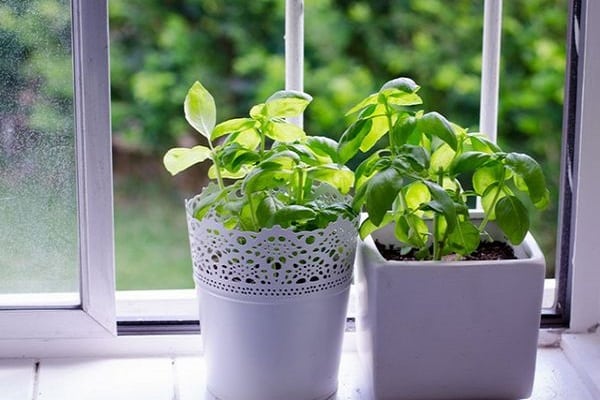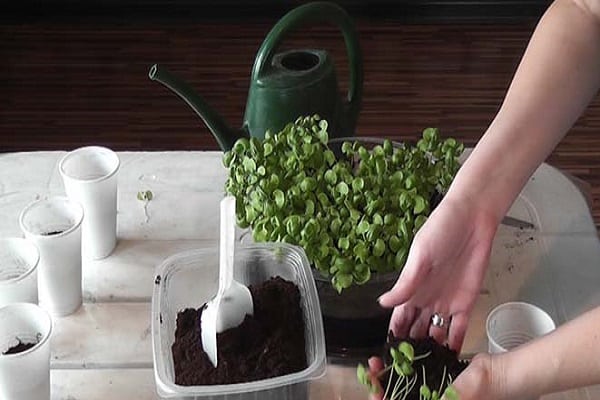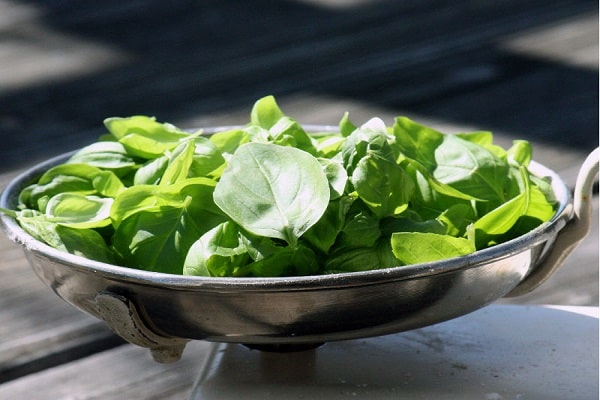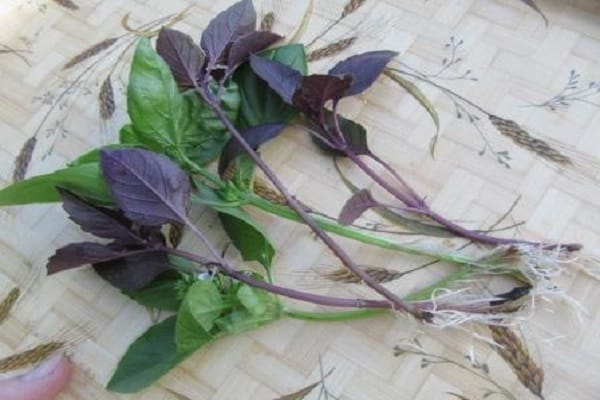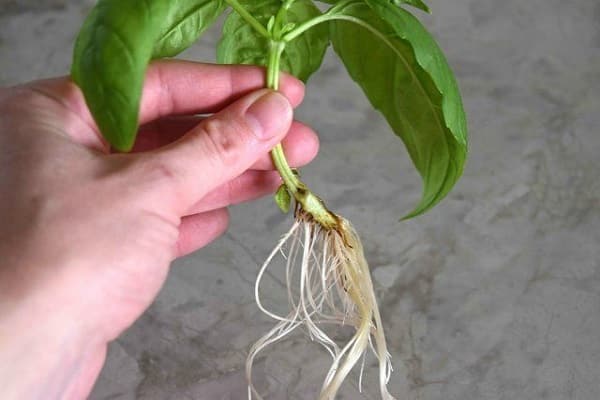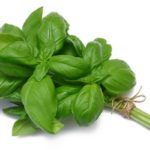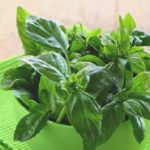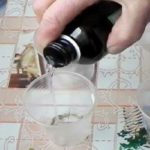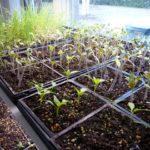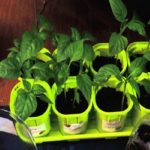Basil is a valuable herb with a piquant taste. It is used not only as an aromatic seasoning for various dishes, but also as a medicinal plant with anti-inflammatory, bactericidal, tonic and other beneficial properties. The plant is heat-loving, so the period of its cultivation in open ground is only 3-4 months. To have fresh herbs on the table all year round, let's look at how to grow basil on the windowsill at home.
Basil varieties for growing at home
To grow basil at home on the windowsill, you can choose any variety. But we must remember that small-leaved and low-growing varieties grow faster and require less labor. For Purple basil and other tall varieties it takes more time and careful compliance with the conditions of detention.
The following varieties are most popular among home gardeners:
- Violet.
- Citric.
- Clove scent.
- Marquis.
- Dwarf.
- Yerevan.
Violet is a large-leaved variety of basil, reaches a height of 50 cm. The leaves have a violet or purple color. The plant is highly decorative and has the most pronounced aroma.
Lemon is a small-leaved, tall variety. The leaves are light green in color, oblong in shape with small fibers on the surface. Has a rich lemon aroma.
Clove scent is an ornamental variety of green basil. The bush has a spherical shape. The leaves have a clove aroma mixed with laurel.
Marquis is a small-leaved compact bush with a mid-early ripening period. The leaves have a spicy aroma.
Dwarf is a miniature variety, reaching a height of 10-20 cm. It comes in green and purple. It has a spicy-spicy taste. Decorative bush, spherical in shape.
Yerevan is a low-growing, small-leaved variety of purple basil. It has a peppery taste with notes of tea.
Planting methods
There are several ways to plant spices. The fastest and least labor-intensive is to transplant a finished plant from the garden. To do this, young sprouts are taken and placed in a pot together with a lump of earth. It should be noted that the fruiting period of such a plant is the shortest, since the flowering period will soon begin and it will have to be renewed.
The method of growing basil by seeds is the most labor-intensive and time-consuming. The main advantage of this method is the long life of the bush. Given suitable conditions and proper care, young greens can be harvested throughout the year.
Can plant basil 1-2 seeds in a large pot or sow several dozen seeds at once into a common shallow container. After about a month and a half, when the seedlings reach a height of 5-7 cm, they can be planted in individual pots.
Soil selection
Having decided on the planting method, you can begin preparing the soil.
The plant is highly demanding in terms of maintenance conditions, including soil quality. In order for basil to feel good on the windowsill, the soil in which it will grow must be fertile, light, and well-permeable to air and moisture. To do this, you can take equal proportions of universal soil for indoor plants and garden soil, which must be treated against pests before use. Soil from the store does not need pre-treatment, since manufacturers take care of this in advance.
A mixture of vermicompost with coconut substrate in a ratio of 1:2 or with soil for houseplants in a ratio of 1:4 is also suitable.
It is important to remember that a prerequisite for basil is the presence of a drainage layer. To do this, it is necessary to pour a layer of expanded clay, pebbles or polystyrene foam 2-3 cm high at the bottom of the container.
Container for growing basil
Before planting seeds, you need to choose the right container based on the chosen planting method. If further picking of seedlings is planned, then at the initial stage any small pots and cups or a box 7-10 cm high will do.
If you plan to grow basil in a pot without replanting, then the volume of the container should be 1.5-2 liters, and the height should be at least 15 cm. Any container for growing spicy seasoning at home should be equipped with drainage holes.
Pre-sowing seed preparation
The process of germination of sprouts from seeds on the windowsill can take several weeks. This is due to the fact that the seeds of this spicy plant have a dense shell containing essential oils. To speed up the emergence of seedlings, you need to perform the following actions.
Basil seeds should be soaked in warm water for 1-2 days before sowing. The water must be changed every 8-12 hours. After this, the seeds can be kept for 2 hours in a light pink solution of potassium permanganate to exclude the possible development of fungal infections. After this time, the seeds are dried on a cloth or napkin and sowing begins.
Sowing Basil Seeds
When growing basil at home, you need to remember that the health of the plant, its growth and the quality of the harvest also depend on proper planting. The seeds of this spicy plant are small, so there is no need to deepen them. The optimal planting depth is 1 cm. The distance between future plants should be 10-15 cm. If the seeds are sown in a common container for subsequent picking, then between them it is necessary to leave at least 2 cm of free space in the row and 5-7 cm between the rows so that When replanting, do not injure young roots.
Seeds are placed in well-moistened soil. After planting, the container must be covered with cling film, glass or a plastic bag to create a greenhouse effect and placed in a dark, warm place, avoiding being near open windows.The cover is removed once a day for a few minutes to prevent the development of mold. This is done before germination, after which the shelter is completely removed.
Conditions for seed germination
Basil does not tolerate low temperatures, so the optimal conditions for seed germination are +25...+28 °C. There is no need to additionally moisten the soil before germination; if necessary, you can only lightly spray the surface with a spray bottle. If the necessary conditions are met, young basil shoots will appear in 5-7 days.
After the first shoots appear, the containers are transferred to a well-lit place protected from drafts. The air temperature in the room should be within +20…+25 °C. When the temperature decreases below this level, the plant begins to slow down in development and lose its aroma.
It is better to grow basil in natural light in the warm season, when the daylight hours are at least 12 hours. For lighting in winter, you will need to use additional artificial sources, for example, phytolamps. They are turned on for 3-4 hours in the evening, installed at a distance of 25-30 cm from the tops of the plants. On cloudy days, such lamps can be left on throughout the day.
When the seedlings grow to 5-7 cm, if necessary, they need to be thinned out and 2-3 cm of soil added so that the sprouts stretch less and the stem becomes stronger.
Rules for caring for basil at home
In order for basil to grow well, be fragrant and juicy, it needs constant moderate moisture. During hot periods, the plant needs to be watered every day in the morning. You can also spray the greens during the day with a spray bottle.It is important to remember that the soil should not be over-moistened to avoid water stagnation and root rotting.
In the autumn-winter period, it is enough to water basil 2 times a week.
For better breathability, loosen the soil in containers with plants once every 2-3 days. This is done when the bush reaches a large size. For fragile shoots, this procedure is not carried out in order to avoid damage to the yet unformed root system.
For good growth, it is necessary to feed the plants with organic fertilizers once every 2 weeks. A universal fertilizer based on compost or humates is well suited for this.
Harvesting
The first basil greens can be obtained 1-1.5 months after sowing the seeds. In order for the plant on the windowsill to be lush and well branched, you need to regularly pinch off 1-2 side leaves. This can be done for the first time when 4 adult leaves appear on the bush. When the plant acquires 6-8 leaves, its top is pinched, thus ensuring the development of side shoots. This procedure is done every 2-3 weeks. Side shoots are also pinched at the growth point behind the third pair of leaves.
At least 4 lower leaves should be left on each plant, since new shoots will subsequently form in their axils. If you cut them, the plant will tend to grow upward rather than outward, and you won’t get a beautiful lush bush. In addition, its yield will decrease significantly.
When the first buds appear, they are immediately removed along with the two lower leaves. If this is not done, the basil will lose its taste, become tough and unsuitable for food.
Growing basil from cuttings
There is another interesting way to grow basil on windows at home.It consists of the following: a side cutting is separated from an adult bush, purchased in a store or growing in a garden bed, and placed in a container with water. The main thing is that the cutting is fresh and does not lose its elasticity. The water needs to be changed every day. After 1-2 weeks, roots will appear and the plant will need to be planted in a pot.
This method is convenient for those who want to grow basil on the balcony without spending a lot of time and effort. The first harvest with this planting method can be obtained in 7-10 days, but the plant will live no more than 4 months.

